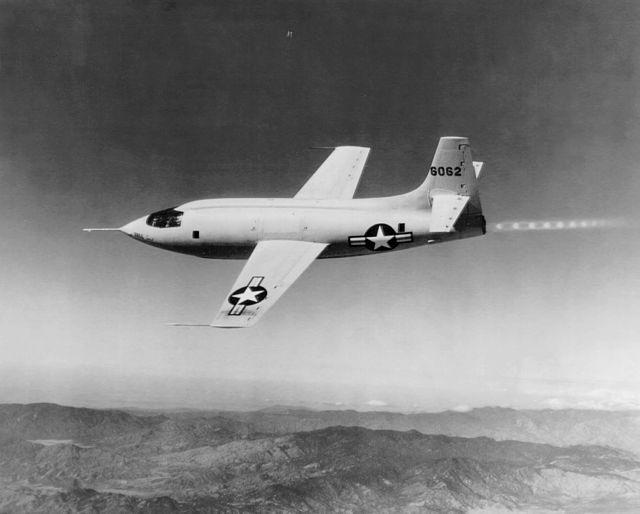A supersonic aircraft is an aircraft capable of supersonic flight, that is, flying faster than the speed of sound. Supersonic aircraft were developed in the second half of the twentieth century. Supersonic aircraft have been used for research and military purposes, but only two supersonic aircraft, the Tupolev Tu-144 and the Concorde, ever entered service for civil use as airliners. Fighter jets are the most common example of supersonic aircraft.
The interaction of shock waves from two supersonic aircraft, photographed for the first time by NASA using the Schlieren method in 2019.
Bell X-1
A Lockheed SR-71 Blackbird supersonic reconnaissance aircraft
The fuselage of Concorde had an extremely high fineness ratio.
Supersonic speed is the speed of an object that exceeds the speed of sound (Mach 1). For objects traveling in dry air of a temperature of 20 °C (68 °F) at sea level, this speed is approximately 343.2 m/s. Speeds greater than five times the speed of sound (Mach 5) are often referred to as hypersonic. Flights during which only some parts of the air surrounding an object, such as the ends of rotor blades, reach supersonic speeds are called transonic. This occurs typically somewhere between Mach 0.8 and Mach 1.2.
A United States Navy F/A-18F Super Hornet in transonic flight
U.S. Navy F/A-18 approaching the sound barrier. The white cloud forms as a result of the supersonic expansion fans dropping the air temperature below the dew point.
British Airways Concorde in early BA livery at London-Heathrow Airport, in the early 1980s







